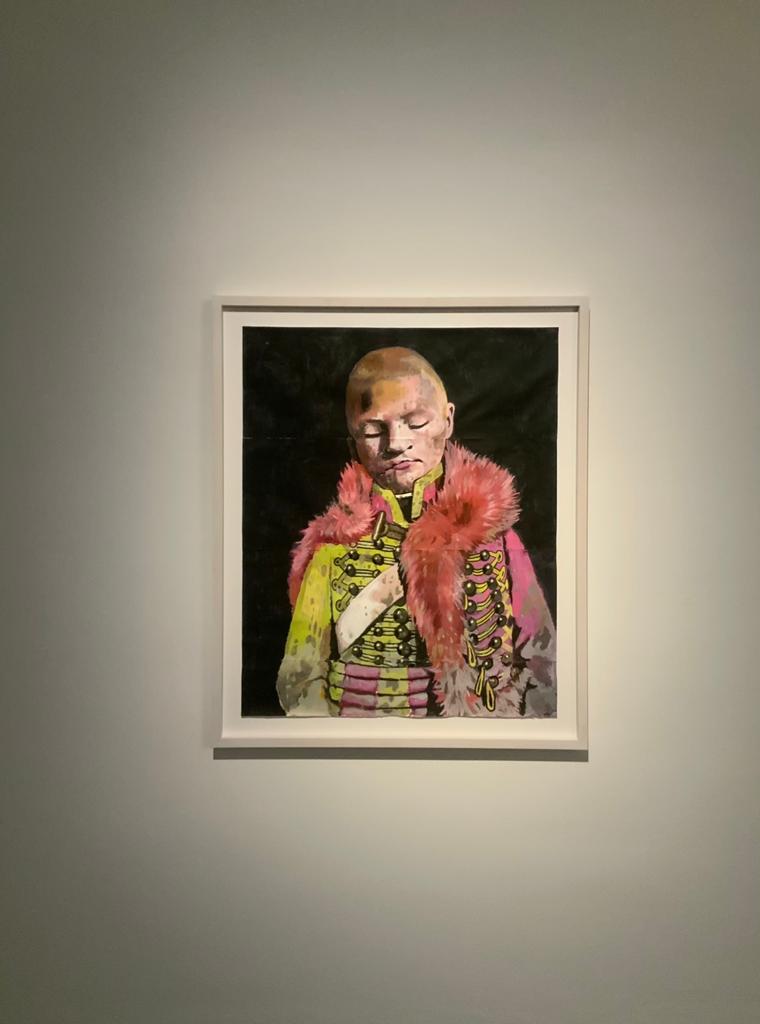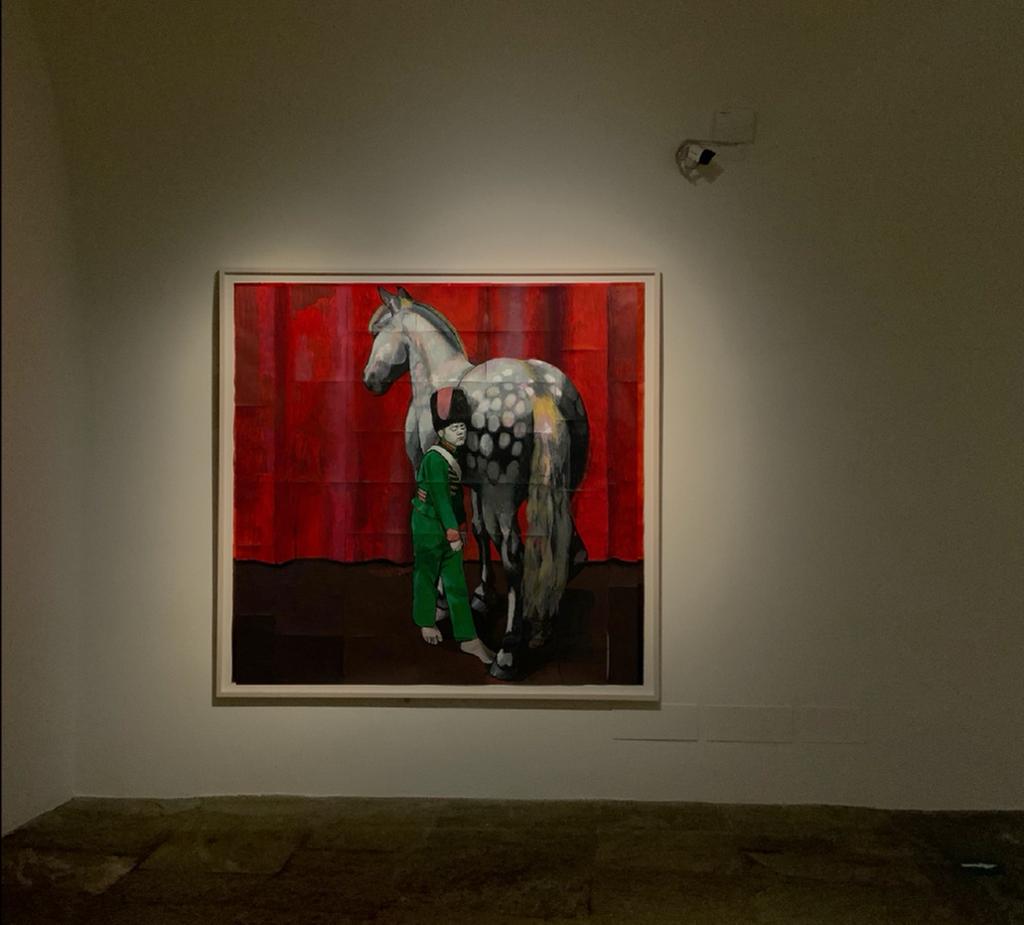



ANDREA AND PAOLO VENTURA, NAPOLEON. FORTE DI BARD, 2022.
Napoleon counselled that, to be believed, one must make the truth unbelievable. This invitation to transform history into fiction, to transcend one’s personal biography so that it becomes the life of all, is conceivably the best introduction to the works of Andrea Ventura and Paolo Ventura, two artists devoted to reinterpreting the Napoleonic myth of the great battles and the Grande Armée that fought them. Under the command of a single man, thousands upon thousands of soldiers, boys and adults from every corner of Europe marched through Italy, Austria, Germany, Hungary, Poland and Russia. In a general’s dream of conquest, so like that of an artist inventing his own world, we must imagine that Andrea and Paolo also went to war – two equally talented, identical twins, differentiated only in that the first is more of a painter, the second more of a photographer.
So we must imagine that the Ventura brothers truly served in the ranks of Napoleon’s army, participating perhaps in the First but surely in the Second Italian Campaign. And we must accept this unexpectedly serious game, defying every philological rule, because otherwise the beauty of the child-soldiers painted by Andrea and the man-soldiers in the self-portraits by Paolo, created specifically for this exhibition, would vanish like a dream. The dates of the Second Italian Campaign invite us to consider it this way. The Second Campaign began on 6 April 1800 and ended on 15 June of that year, 222 years ago. Surely that is a curious anniversary, two centuries and twenty-two years, an oddity of the calendar – that two, the number of a couple, of one before a mirror, the eternal double, myself and the other, that multiplies and in the sequence of three starts to repeat and clone itself ad infinitum.
Endlessly two – Andrea and Paolo – endlessly together and separate, endlessly united and in battle, endlessly brothers. And so when, if not in 2022, invite Andrea Ventura and Paolo Ventura to exhibit together for the first time in the spectacular setting of Bard Fort? Two halves come together in the ‘Napoléon’ exhibition, as suggested by the exhibition image, like a card game where the face of a child painted by Andrea continues in the face of Paolo and his self-portrait. It is the story of childhood that grows into adulthood and, reversing the nature and timing of growth, the story of a man who becomes a child once again.
It is strange to meet and embrace in an edifice built for war, in Bard Fort, perched on the mountainside where it dominated the Dora Baltea River as long ago as the 6th century. At that time, it was an Ostrogoth stronghold manned by sixty soldiers; later, in the High Middle Ages, travellers crossing Valle d’Aosta marvelled at the strategic, impregnable construction. Indeed, whoever wanted to reach the Alps from the Po Valley, and vice versa, was forced to pass by there.
The name, faithfully preserved over the centuries, is that of the Bard family, who controlled the castle until the arrival of the Savoy, during whose dynasty the fort enjoyed its most glorious period. In 1704, under the command of Vittorio Amedeo II, the fortress succeeded in blocking the advance of the French into Italy. Almost a century later, the French army crossed the Alps again. On 14 May 1800, the reserve army, the Armée de réserve, crossed the Great St Bernard Pass, led by Napoleon Bonaparte, who had become First Consul following the Coup of 18 Brumaire in the eighth year of the Revolution, 1799 on the Gregorian calendar. He had hoped to surprise the Austro-Piedmont army, yet once again the fort, defended by four hundred soldiers under the command of Captain Stockard von Bernkopf, stopped the advance of Napoleon himself, that modern-day condottieromarching in the footsteps of Hannibal and Charlemagne.The siege lasted two weeks. Among the younger soldiers was 19-year-old Stendhal, who had enlisted to escape the boredom of his tedious job in the Ministry of War. The future writer left Paris on 7 May 1800. “I was completely drunk, mad with happiness and joy. Here begins a period of enthusiasm and perfect happiness,” he recalled in his autobiographical novel The Life of Henry Brulard, written between 1835 and 1836 when he was fifty-two years old. Upon reaching Martigny, Stendhal began the arduous ascent of the Great St Bernard, reaching the pass at 2473 metres above sea level, and six hours later, he set foot in Italy. It seemed that the march was proceeding easily, but the troops who had descended first and were supposed to already be forty leagues from the border had been blocked at Bard Fort. “I see myself bivouacking half a league from the fort, on the left-hand side of the highway. The next day I had twenty-two mosquitoes bites on my face and one eye completely closed,” recounts Stendhal. The fighting continued, a true baptism by fire for the future writer. “I remarked before leaving my rock that the cannonade at Bard made a terrifying din; this was the sublime, yet a little too close to danger. Instead of pure enjoyment, the soul was still a little bit concerned with holding itself steady.” After repeatedly refusing to surrender, Captain Bernkopf finally raised the white flag of surrender on 1 June and signed the capitulation at sundown that same day. Furious at the fierce resistance of the Piedmont and Austrian soldiers, Napoleon ordered that the fort be razed to the ground. It was rebuilt only thirty years later, however, between 1830 and 1838. In the days of battle, between the fallen and the wounded, the French army had lost more than two hundred soldiers. Stendhal reported, “I was so struck by the number of dead horses and other military debris that I came across between Bard and Ivrea, that no distinct memory is left.” Given the amnesia of even this active participant in the events, Andrea and Paolo created their own fictionalized version, their own unbelievable truth. And like the soldiers of every Napoleon in history, they fought and slept, fought and died, fought and rose up again.War – other people’s war – entered the lives of Andrea and Paolo when they were just children. Gathered at Sunday lunches, two generations – their grandmother, uncles, aunts, mother and father – would recount their memories of the Second World War: Milan being bombarded, a head rolling on the pavement, a lock of hair turned suddenly white out of sheer terror, a decapitated Madonna statue, a window exploding, sirens, bomb shelters, rubble. Each voice from around the table was that of an eye-witness to those horrors, some as a child, some as an adult. It was the voice of a different Stendhal who had participated in the wartime events, which were so alive in the family memory that their lunch seemed to be under attack once again every Sunday. Like all children born in the 60s, Andrea and Paolo played at being soldiers. Since they lived in the centre of Milan, they did not play in the courtyard but instead lined up armies of paper soldiers in their living room, in the company of their father Piero Ventura, a well- known illustrator. Their toy soldiers were not made of silver, like those given by Maria de’ Medici, queen of France, to her son Louis XIII or those given by Catherine the Great to the Tsar’s son Peter, the future Peter III. Nor were they made of lead, like the soldiers created by Johann Haffner of Fürth, winner of the Medal of Excellence at the Paris Toy Exhibition in 1871 for his reproduction of the armies of the Napoleonic wars.
No, these anachronistic “Ventura toy soldiers” were made of humble paper and kept in an old tin piggy bank in the shape of a house, perhaps a gift from a bank in the 30s. Someone had drawn beards and moustaches on the soldiers’ faces to distinguish between the Roman, Napoleonic, Garibaldini, Northern and Southern soldiers, not to mention the cowboys and Indians, out of horror of repetition and the unidentifiable. However, in this domestic epic, it mattered little which army won – the army commanded by the father against the sons or that of a single son against the others. What mattered was the material, the paper, and it was on paper – to draw, photograph or sign a non-belligerence pact – that the paths of Andrea and Paolo merged and parted.
According to Paolo, Andrea was the best, the most talented, the mind that imagined and the hand that drew with prodigious virtuosity. At the age of twenty, Andrea left Italy to settle in New York, where his portraits were featured on covers of the New Yorker, New York Times and Rolling Stone. At the same age, or maybe a few years older, Paolo began his career as a photographer, first as a fashion photographer in Milan, Paris and New York.
Laura Leonell